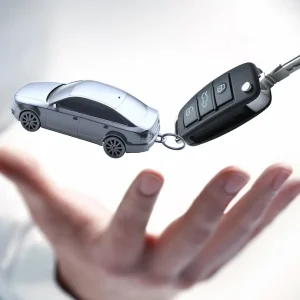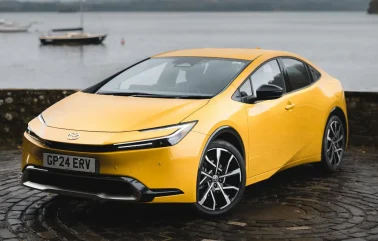
Toyota Prius
Think of a car that defined hybrid models and the move towards electrification, and we bet you’ll picture a Toyota Prius. Over six million were sold across five generations, before the last, which was available as a plug-in, and additionally the Prius+ MPV, was discontinued in 2021.
Previously a fleet hit with private hire buyers, the reason for its discontinuation was they turned to the British-built Toyota Corolla Touring Sports estate instead. The quirky, but more modern, CH-R appealed more to other fleet drivers.
This current Mk5 Prius was originally launched two years ago, with the company line being that it wouldn’t come to the UK because of the lack of demand. Well, now it’s back on sale in the UK, only as a plug-in, because enough customer demand is now said to exist.
This Prius is a very different proposition from the four generations before it! Let’s start with the low and sleek styling. Inside, you look over the top of the small-ish steering wheel to see the high-set instruments – Peugeot i-Cockpit style.
Move to the back, and legroom is good – although tall passengers’ heads will be brushing the curvy roofline in the back, thanks to the design. The smaller 284-litre boot will keep taxi drivers in their Corollas.
Underneath the curvy body, the Prius is powered by a 152hp 2.0-litre petrol engine, mated to a 163hp electric motor, equalling a total output of 223hp (not the 300+hp expected, as neither the engine nor motor go to maximum power at the same time). To get all this power to the road, the Prius is fitted with Toyota’s electronic continuously variable transmission, called E-CVT, which, in practice, mostly acts like a conventional auto.
Elsewhere, the 13.6kWh battery for the plug-in system lives under the back seat and gives a decent 53 miles of EV-only power – equalling an 8% BIK figure. Then there’s the 17g/km emissions, and 41.4mpg consumption.
Although the entry-level Design equipment grade is expected to be the best fleet seller, the range-topping Excel is more competitively priced against the set of rivals here. Sadly, despite the EV range and BIK figure, the Toyota is in third place due to its middling fuel cost, NI and depreciation figures.
| Model | Toyota Prius Excel |
| P11D | £39,900 |
| CO2 (tax) | 17g/km (8%) |
| BIK 20/40% a month | £53/£106 |
| Fuel consumption | 41.4mpg |
| National Insurance | £36.70 |
| First year VED | £0 |
| Subsequent VED | £180 |
| Engine size/power | 1,987cc + electric motor/223hp |
| AFR | 15p |
| Residual value | 39.9% |
| Depreciation | £23,950 |
| Fuel costs | £5,421 |
| SMR | £3,204 |
| Cost per mile | 54.29p |
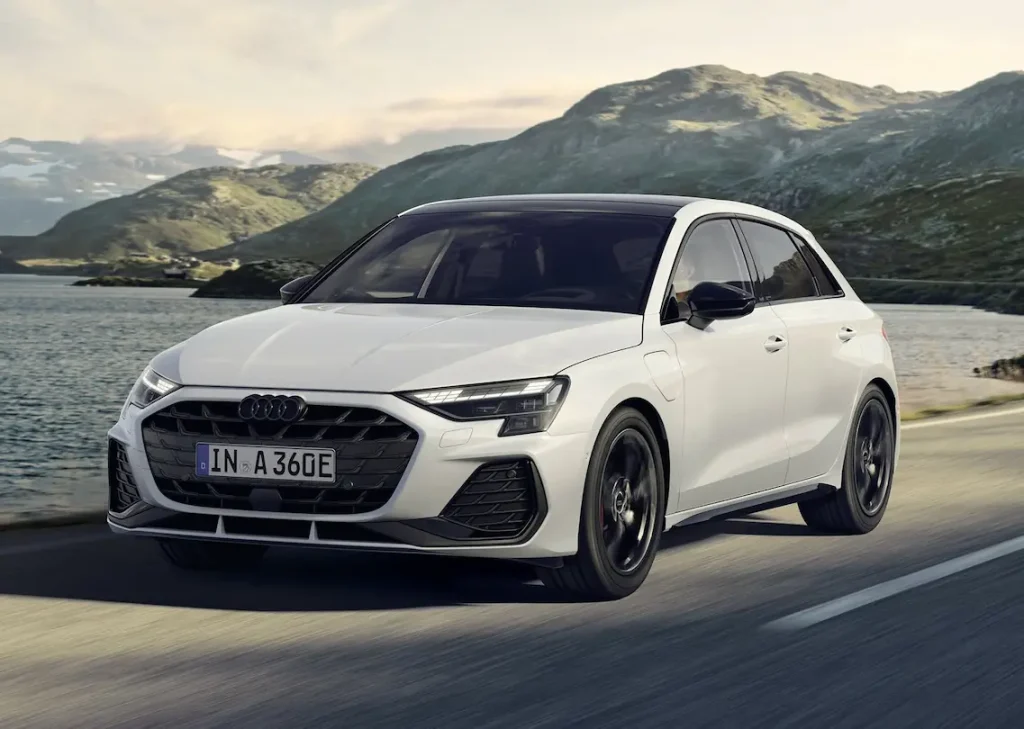
Audi A3
Audi facelifted its fourth-generation A3 this year, mostly focusing on tweaking its already sharp looks, plus making changes to the interior trim
and specifications.
A giveaway that you’re looking at the plug-in version is the extra flap on the offside front wing.
Already popular with the fleet segment as a plug-in hybrid, Audi has gone even further with this facelifted car, and the result is 88 miles of EV range. This is mostly because of the fitment of a bigger 25.7kWh battery – the outcome being the 7g/km CO2 figure and a 5% BIK implication.
In entry-level Sport specification, the A3 is the cheapest to buy of our group. It also has the lowest depreciation figure at £18,779, and the joint-lowest BIK figure with the Volkswagen. Coming top in so many areas, it’s not really surprising that the A3 has the lowest cost per mile figure at 43.84p, and as such it has finished in first place.
| Model | Audi A3 Sport 40 TFSIe |
| P11D | £39,095 |
| CO2 (tax) | 7g/km (5%) |
| BIK 20/40% a month | £33/£65 |
| Fuel consumption | 56.6mpg |
| National Insurance | £22.47 |
| First year VED | £0 |
| Subsequent VED | £180 |
| Engine size/power | 1,495cc + electric motor/280hp |
| AFR | 15p |
| Residual value | 52% |
| Depreciation | £18,779 |
| Fuel costs | £4,286 |
| SMR | £3,241 |
| Cost per mile | 43.84p |
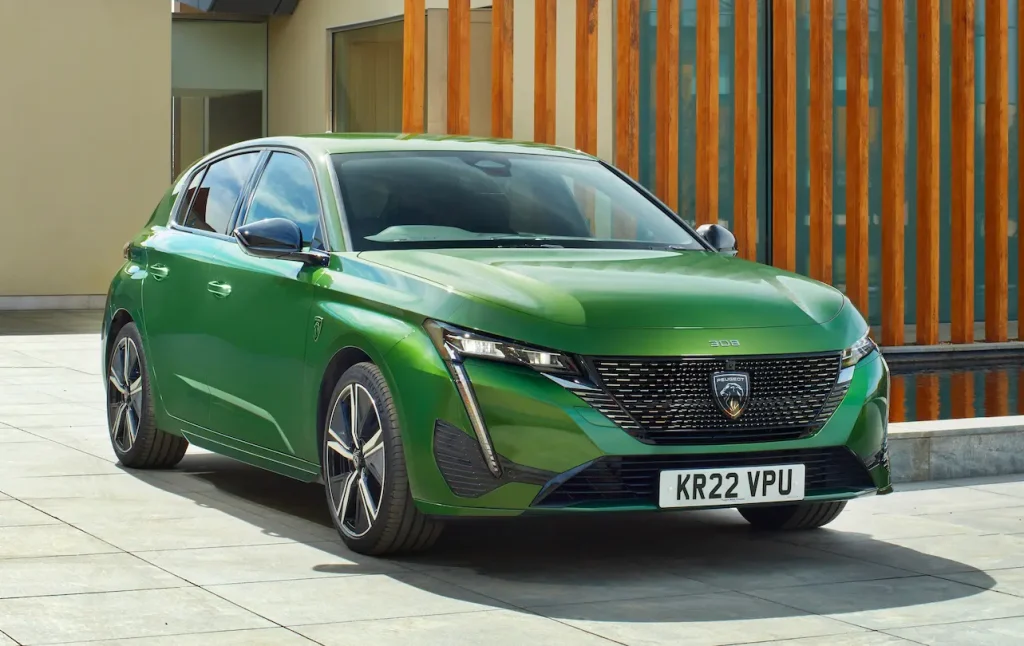
Peugeot 308
Peugeot’s latest 308 is a good quality choice that boasts distinctive exterior styling, an attractive interior, and in GT form it is well-equipped. Plus, in plug-in hybrid form, the 308 is a good way to reduce a fleet driver’s running costs. As along with almost 180hp, because it’s a plug-in hybrid, this Peugeot boasts 37 miles of electric range.
In our opinion, what lets the 308 down, is that despite the GT badging, it is very average to drive. Then there’s the i-Cockpit driving position, which won’t suit the tallest drivers, and finally the rear legroom is surprisingly compromised comsidering its size..
Although this Peugeot is a plug-in, its 12% BIK figure is off the pace in this group, and quite a way behind the winning Audi’s 5% figure. Still, it’s the cheapest to maintain of the group, at £2,096, and the Peugeot’s 51.9mpg cengine-only onsumption is also closest to the A3.
| Model | Peugeot 308 GT Plug in Hybrid 180 |
| P11D | £40,815 |
| CO2 (tax) | 29g/km (12%) |
| BIK 20/40% a month | £82/£163 |
| Fuel consumption | 51.9 mpg |
| National Insurance | £56.32 |
| First year VED | £0 |
| Subsequent VED | £190 |
| Engine size/power | 1,598cc + electric motor/225hp |
| AFR | 15p |
| Residual value | 36.7% |
| Depreciation | £25,816 |
| Fuel costs | £5,571 |
| SMR | £2,096 |
| Cost per mile | 55.80p |
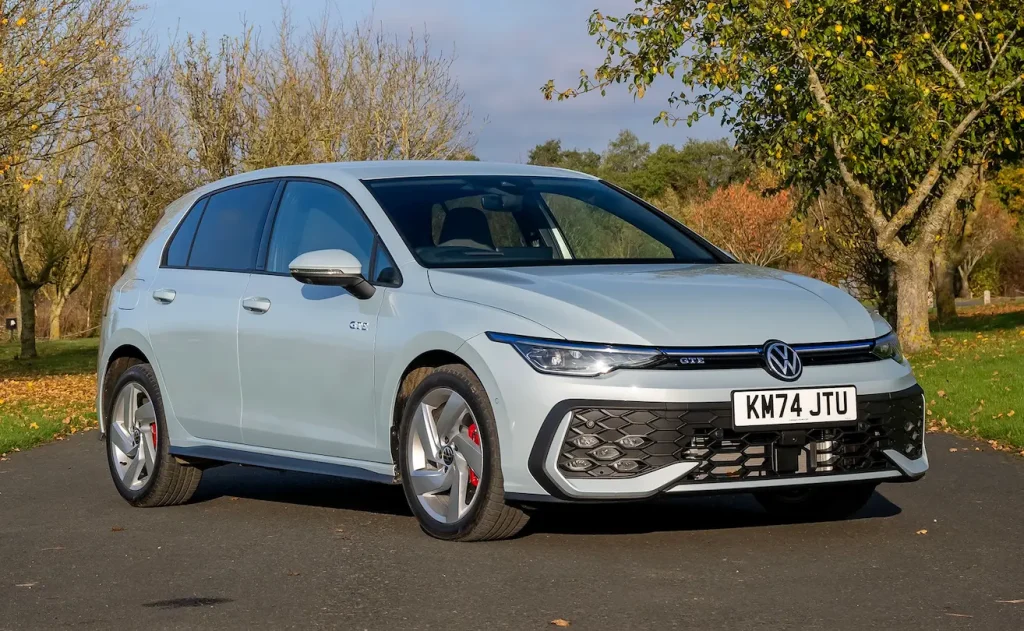
Volkswagen Golf
Like the A3, the Volkswagen Golf has received a makeover this year, with changes mostly focussing on the exterior and interior tweaks. There is a plug-in Golf in more standard Style spec, but the most performance-focused GTE here fits in better with the other cars in this set price-wise.
The GTE is positioned alongside the petrol-powered GTi Clubsport, but thanks to a new 19.4kWh battery, Volkswagen’s more performance-oriented plug-in Golf is now capable of 81 miles of EV power alone – almost as much as the Audi’s 88 miles. The 5% BIK figure matches the A3, and its 8g/km CO2 figure is only just shy of the A3.
German manufacturers such as Volkswagen have always tended to perform well when it comes to residuals, and according to our figures, this sportier Golf at 50.3% is well clear of the Toyota and Peugeot, and just behind the Audi. This close second also reflects the Golf’s finishing position overall, with cheaper SMR costs than the Audi not enough to secure victory.
| Model | Volkswagen Golf GTE |
| P11D | £39,695 |
| CO2 (tax) | 8g/km (5%) |
| BIK 20/40% a month | £33/£66 |
| Fuel consumption | 27.6 mpg |
| National Insurance | £22.82 |
| First year VED | £0 |
| Subsequent VED | £180 |
| Engine size/power | 1,495cc + electric motor/272hp |
| AFR | 15p |
| Residual value | 50.3% |
| Depreciation | £19,723 |
| Fuel costs | £4,731 |
| SMR | £2,388 |
| Cost per mile | 44.73p |



